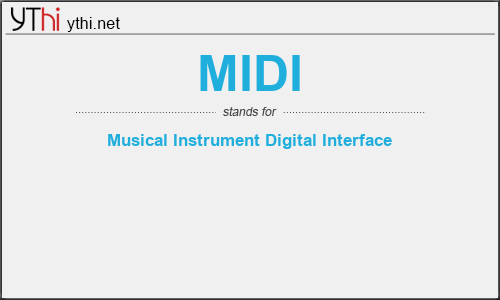What does MIDI mean? What is the full form of MIDI?
The full form of MIDI is Musical Instrument Digital Interface. It’s used on Computing ,Protocols in Worldwide
MIDI, in full musical instrument digital interface, technology standard allowing electronic musical instruments to communicate with one another and with computers.
MIDI (Musical Instrument Digital Interface) is an industry-standard protocol that enables electronic musical instruments (synthesizers, drum machines), computers and other electronic equipment (MIDI controllers, sound cards, samplers) to communicate and synchronize with each other. Unlike analog devices, MIDI does not transmit an audio signal: it sends event messages about musical notation, pitch and intensity, control signals for parameters such as volume, vibrato and panning, cues, and clock signals to set the tempo.
In the early 1980s, there was no standardized means of synchronizing electronic musical instruments manufactured by different companies. Manufacturers had their own proprietary standards to synchronize instruments, such as CV/gate and Digital Control Bus (DCB). Roland founder Ikutaro Kakehashi felt the lack of standardization was limiting the growth of the electronic music industry. In June 1981, he proposed developing a standard to Oberheim Electronics founder Tom Oberheim, who had developed his own proprietary interface, the Oberheim System

MIDI
means
Musical Instrument Digital Interface![]()
Translate Musical Instrument Digital Interface to other language.


Leave a Reply
You must be logged in to post a comment.